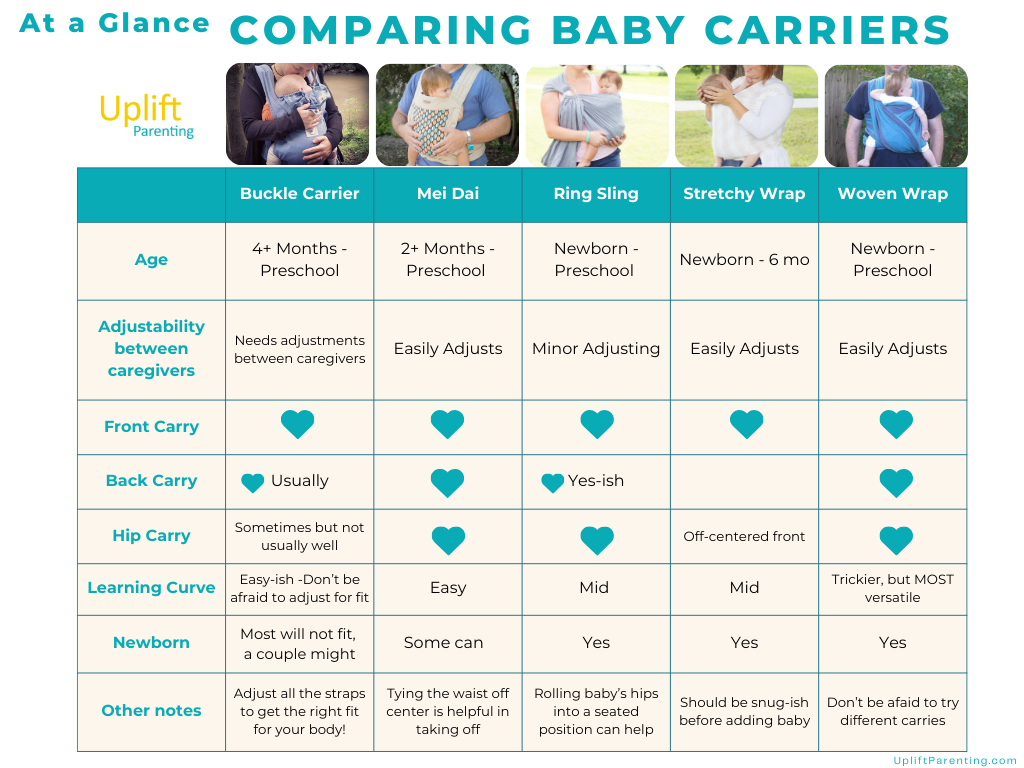Baby Carrier Basics
Benefits of Baby Carriers & Babywearing
Types of Baby Carriers
This is a VERY brief overview to introduce different carrier types available for sale in the United States. There are MANY more carrier types around the world and throughout history. This is not meant to be an all-inclusive list/overview. Each carrier type listed has a variety of different features available. There are usually different sizes, different fabric options, different accessories, etc. If you are interested in more information on a specific carrier type click on the image below or email us!
Tips for Success!
Know Your Carrier
Get to know your carrier before using it by reading the instructions and figuring out all the parts of it.
Practice using it with a doll or stuffed animal before putting it on with baby.
Always inspect your carrier before use to make sure everything is where it should be and there are no broken buckles, holes, or other structural damage.
Follow manufacturer instructions for cleaning.
In sight & Upright
Baby is in an Upright position with their head should be close enough to easily kiss, resting on the caregiver’s chest (just below collar bones). Tip their head up slightly so that there is space between their chin and chest.
Their head, neck, and airway always supported and their weight is on their bottom.
Baby’s face & nose should always be visible; nothing covering their face.
Snug
Baby is secrured snug to the body in a natural position for them.
Supporting baby’s head/spine, take a gentle bow. If baby falls away from your body, the carrier needs to be tightened up some more. But not so tight you struggle to breathe!
Seek Help
Still doesn't feel right? Seek help from a consultant, organization, or group.
Choosing a Baby Carrier
Choosing a baby carrier can feel overwhelming with so many options available these days, how do you decide what works best for your family?
I want to acknowledge that feeding babies can be done at the breast/chest, but is not limited to that! Giving milk via bottle, syringe, SNS, even a cup are all solid options! While each carrier is a little different, the same Basic concepts are used for them all.
Pro Tip: Establish a solid feeding relationship and a babywearing relationship separately before bringing them together. Also, it is often not hands-free, especially in the beginning.
1. Loosen - loosen the carrier to give yourself a little bit of slack.
2. Lower - lower baby/toddler down so their head is near the nipple/in a comfortable feeding position.
3. Latch - latch baby on to the nipple/feed baby.
ALWAYS bring baby back to the in sight & upright when done feeding, do not leave baby in the lowered position.





















